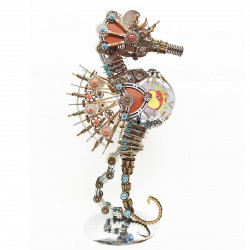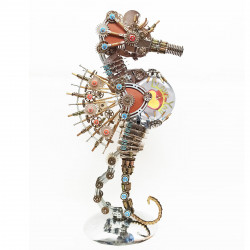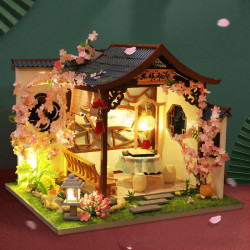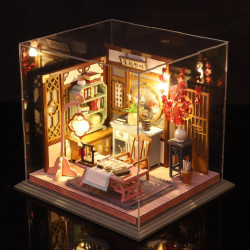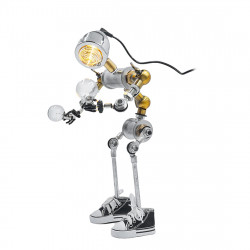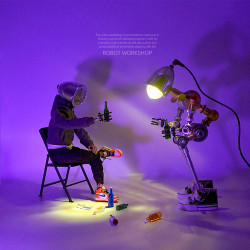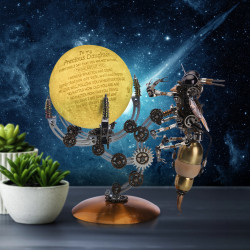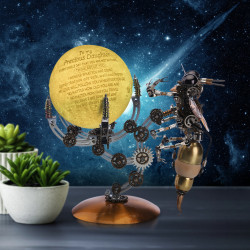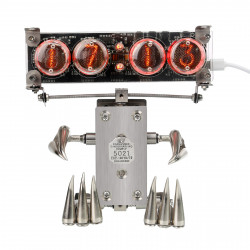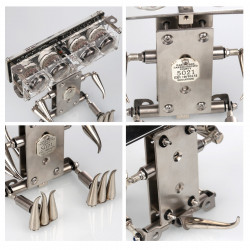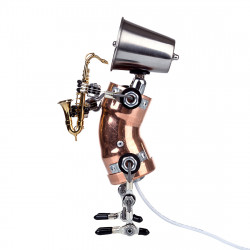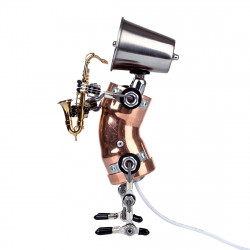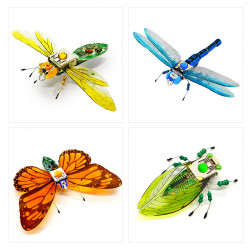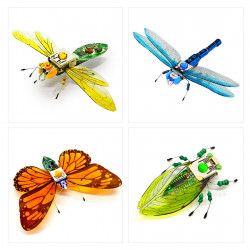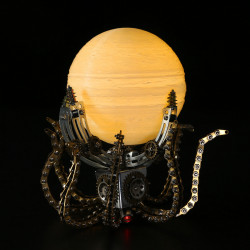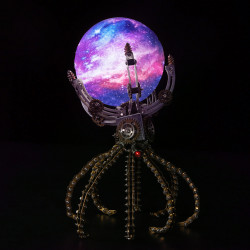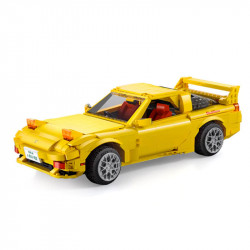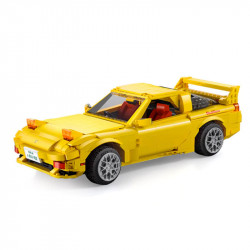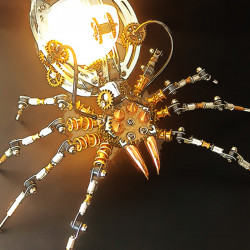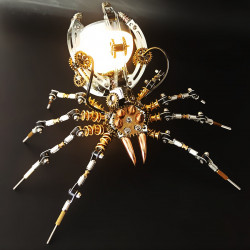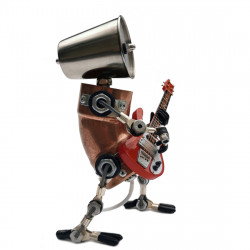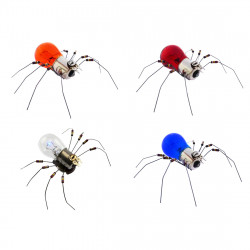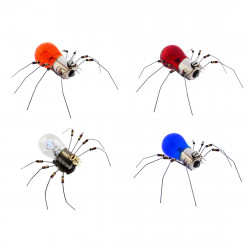Cool Lamps
The Ultimate Guide to Designing and Building Cool Lamps
Manufacturing one-off lamps means combining creativity, functionality, and technical knowledge, making spaces magic with bespoke lighting. This how-to guide provides instructions on designing and constructing funky new lamp designs from start to finish, from idea to product, and safety and style. Lose yourself within this exciting DIY adventure and light up your home that much more!
Why Build Your Own Lamp?
You can increase personalization in the kind of lamps you select. Lamps that you make yourself can be statement pieces or meaningful gifts. It also encourages hands-on work and prompts students to think creatively about problems.
Customization and Artistic Expression
When you design your lamp, it can make your room feel like (and be) more like home. You have the power to manipulate materials, shapes, and lighting. This liberation creates unique pieces.
● Exclusive Aesthetic: From your taste or theme.
● Custom Fit: Fits the specific room size or decorative scheme.
● Outlet for Creativity: Pushes you to try out new designs.
Cost-Effectiveness
Homemade lamps may cost less than designer models. The use of repurposed or budget materials saves money. Intelligent investment ensures value where value needn't detract from quality.
● Be Resourceful: Upcycling of rubbish materials.
● Low-Cost Materials: Standard parts are readily available.
● Don’t Pay the Markup: Say goodbye to rush fees and retail markups for one-of-a-kind designs.
Skill Development
Lamp-making gives you a tight skill set in design, electrical work, and handiwork. With each project comes confidence and technical capabilities. These skills carry over to other projects around the house as well.
● Fundamental Electricals: Discover wiring and safety.
● Workmanship: Cutting, fitting, assembly mastery finish routes all.
● Problem-Solving: Solve design and technical problems.
Understanding Lamp Components
Knowing the parts of a lamp guarantees you a successful and safe wiring job. All play vital roles in performance and cosmetic looks. Understanding these components helps in the selection of materials and assembly.
Base
It has a base to stabilize and hold the wiring. Materials like wood, metal, or ceramic are all choices that combine durability with style. Make sure the base is weighty enough so that it won't topple over.
● Materials of Choice: Wood for warmth, metal for sleekness.
● Weight Stabilizing: Avoid swaying on wobbly ground.
● Cable Space: Cords and connections are concealed in the hookup space below.
Light Source
The bulbs decide the brightness, color, and energy efficiency of a vehicle. LED bulbs are known for their long lifespan and low heat emission. Select wattage and color temperature to fit the lamp’s use.
● Your Choice of LED: Saves energy and money.
● Color Temperature: Cozy (2700K) for romantic, cool (5000K) for bright task lighting.
● Wattage (Load) Limits: Match the rating of the socket and electrical wiring.
Socket and Wiring
The bulb is retained in the socket and connected to the power source by wires. For safety, use UL-listed sockets. Insulated wires protect against shocks and short circuits.
● UL-Listed Sockets: Sockets are the most important external components of a string light.
● Insulated Wiring: Prevents electric shocks.
● 5' Cord: Offers a variety of placement options.
Lampshade
For those reasons, shades filter light and add richness to the look of a shade. Different effects are achieved with materials such as cloth, paper, or glass. Make sure that the shade you choose is a good match for the base and that it fits tightly.
● Light Diffusion: Reduces glare for more pleasant light.
● Material Diversity: Fabric for coziness, metal for now.
● Perfect Fit: No bunching or oversizing.
Design Inspiration
Having clear vision simplifies the construction process. Inspired by trends, nature, or favorite interests. It is the road to a successful project that won’t have a problem functioning before its construction.
Finding Inspiration
Browse design styles such as minimalist, industrial, or bohemian for inspiration. Search platforms like Pinterest or check out local markets for fun ideas. Nature, architecture, or even the vintage of a space can inspire.
● Style Trends: Minimalist for clean profiles, industrial for raw textures.
● Online Resources: Websites feature designs from around the world.
● Personal Touch: Work someone’s hobby or memory in there.
Sketching Your Design
Draw some detailed images to see the shape, size, and parts of the lamp. Add measurements; proportions need the correct amount of space. Develop the design to suit both aesthetically and functionally.
● Detail the Design: Sketch base, shade, and bulb placement.
● Scale: Adapt to the size of the room or table.
● Design Iterate: Try out several concepts to see what works best.
Setting a Budget
Charge materials and tooling, electrical to job. Repurposing, by way of using mason jars or driftwood, can cut costs. Spend wisely on good wiring and focus on safety first.
● Cost of Materials: Wood, metal, and salvage all cost different amounts.
● Electricals: Use quality sockets and cords.
● Tools Needed: Consider drills, saws, or pliers.
Materials and Tools Needed
Having the right materials gathered is key when it comes to a smooth build. Good material that is durable and wear-resistant pretty well. Moving parts make it easy to assemble and guarantee accuracy.
Material Options
Choose the materials that are oriented towards design and longevity. Wood, metal, or concrete are good choices for bases, and fabric or parchment for shade. Repurposed pieces for style and sustainability.
● Base Materials: Oak for tradition, steel for contemporary.
● Material of Shade: Linen for softer; glass for clarity.
● Upcycled Items: Bottles, crates, or pipes.
Statutory Warning
Making lamps involves electrical work, which can be dangerous. Always use UL-listed parts and follow safety rules; consult a pro if you have doubts.
Essential Tools
Tools required are drill, screwdriver, wire cutters, and pliers for assembly purposes. A multimeter is used to test electrical connections. Sandpaper and paint the way to a nice finish.
● For Bases or Mounts: Drill and bits.
● Wire Tools: A quality pair of cutters and strippers for good wiring.
● Finishing Tools: Skin or sandpaper, aesthetics with a brush.
Safety Gear
Use gloves, safety glasses, and a dust mask when cutting or sanding. Ensure insulated tools are used on live parts. Have a fire extinguisher at hand for safety.
● Safety Equipment: Protect eyes, hands, and lungs.
● Insulated Tools: To avoid electrical shock.
● Fire Safety: Be ready for accidents.
Step-by-Step Building Process
An organized method will result in a build that works. And you'll never guess what you can use to make the perfect lamp for any room in the house in just a few easy steps! That takes us through every phase to the brilliant end.
Step 1: Prepare the Base
Cut the base materials, shaping them to your preferred design. Punch wire and socket holes. Sand and easily D.I.Y. or finish with paint, stain, or a sealant for a polished appearance.
Step 2: Attach a Light Bulb Socket to Wire
Wire the insulated wire through the base to the socket. Attach the socket with a bracket or adhesive. Attach the wires to the terminal tightly and safely.
Step 3: Testing the Electrical Units
You will now test the electrical components, which indicates there is a voltage loss. Check with a multimeter for continuity and correct wiring. They can be used for testing both the bulb and the socket. For these types of occurrences, simply unplug the device and reinstall the connections.
Step 4: Attach the Lampshade
Attach the shade to a harp or clip-on frame that fits the socket. Make sure it’s level and doesn’t touch the bulb. Make stable and align for appearance.
Step 5: Assemble and Comprehend
Putting everything together, bases are stable and wires are hidden. Examine for anything that is loose or wires showing. Test the lamp to be sure all is well.
Creative Lamp Design Ideas
Unique designs to make your lamp shining. Try a few things out with odd factions or concepts. Those ideas lead to bizarre, attention-grabbing designs.
Industrial Pipe Lamp
Go with metal pipes and fittings for a sturdy, contemporary vibe. Match it with an Edison bulb for that classic look. A concrete base brings stability and contrast.
● Materials: Steel pipes, brass connections, and concrete.
● Aesthetic: Raw, urban, minimal.
● Bulb Option: Bare filament for warmth.
Mason Jar Lamp
Fill a mason jar with pebbles, shells, or fairy lights for a touch of rustic light. Mount a socket on the lid. A burlap shade adds to the warm feeling.
● Supplies: Glass jar, decorative fill, twine.
● Aesthetic: Farmhouse, nostalgic, cozy.
